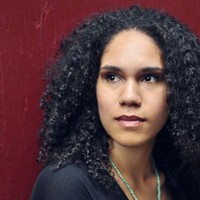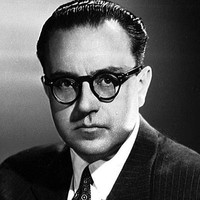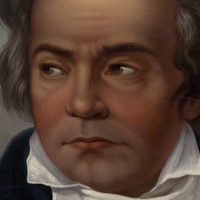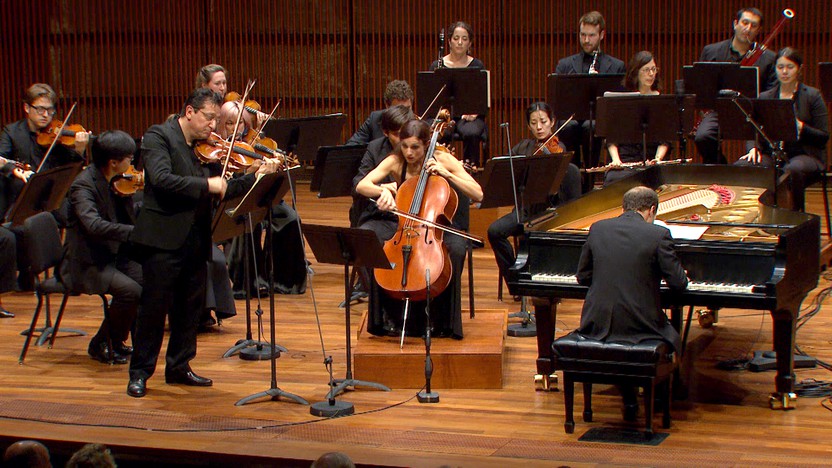Details

Jessie Montgomery
Banner
Banner was commissioned by the Sphinx Organization as a tribute for the 200th anniversary of the Star Spangled Banner, the American national anthem. Banner is a rhapsody on the Star Spangled Banner theme. Drawing on musical and historical sources from various world anthems and patriotic songs, I’ve made an attempt to answer the question: “What does an anthem for the 21st century sound like in today’s multi-cultural environment?” The structure is loosely based on traditional marching band form where there are several strains or contrasting sections; I have drawn on the drum line chorus as a source for the rhythmic underpinning in the finale.
As a culture, we Americans are perpetually in search of ways to express our ideals of freedom, to proclaim, “we’ve made it!” as if the very action of saying it aloud makes it so. And for many of our nation’s people, that was the case: through work songs and spirituals, enslaved Africans promised themselves a way out and built the nerve to endure the most abominable treatment for the promise of a free life. Immigrants from Europe, Central America and the Pacific have sought out a safe haven here and though met with the trials of building a multi-cultured democracy, continue to find roots in our nation and make significant contributions to our cultural landscape. A tribute to the U.S. national anthem means acknowledging the contradictions, leaps and bounds and milestones that allow us to celebrate and maintain the tradition of our ideals.
— © Jessie Montgomery
Jessie Montgomery ©2017

Alberto Ginastera
Variaciones concertantes for Chamber Orchestra
Alberto Ginastera was 21 and still a conservatory student in his native Buenos Aires when he completed his first ballet, Panambí. With the performance of orchestral excerpts in 1937 and a full staging in 1940, the young composer established himself as a potent voice in Argentinian concert music. He also won over the American ballet producer Lincoln Kirstein, who encountered Ginastera while on a Latin American tour and commissioned Estancia, the gaucho-themed ballet that remains Ginastera’s most recognizable calling card. After a summer at Tanglewood in 1941, studying composition with Aaron Copland, and a U.S. residency from 1945 -1947 funded by a Guggenheim grant, Ginastera cemented his place as the most significant Argentinian composer on the international scene.
The Variaciones concertantes date from 1953, during a difficult period when conflict with the regime of Juan Perón cost Ginastera his teaching job. The commission from the association Amigos de la Música and the premiere performance led by world-famous maestro Igor Markevitch buoyed Ginastera’s public standing at a critical time. As he wrote on a program note, “These variations have a subjective Argentine character. Instead of using folkloristic material, I try to achieve an Argentine atmosphere through the employment of my own thematic and rhythmic elements. The work begins with an original theme followed by eleven variations, each one reflecting the distinctive character of the instrument featured. All the instruments of the orchestra are treated soloistically. Some variations belong to the decorative, ornamental or elaborative type, others are written in the contemporary manner of metamorphosis, which consists of taking elements of the main theme and evolving from it new material.”
The strong contours of the central theme help it to stand out as it goes through its many transformations. In the first statement by a solo cello, supported only by a harp, the melody toggles between the steady keynote and its upper neighbors (first rising a half-step, next rising a minor third). Other variants invert the pattern, like in the variation in canon for oboe and bassoon that oscillates downward from a fixed pitch. The boisterous final variation, “in the style of a Rondo,” draws from Stravinsky’s incisive neoclassicism and Copland’s folksy dance music to forge an original style, one rooted in Argentina’s lively cities and vast countryside.
— © Aaron Grad
Aaron Grad ©2017

Ludwig van Beethoven
Triple Concerto for Piano, Violin and Cello
History has been unkind to the Triple Concerto, a work created in the most heroic phase of the orchestral world’s favorite composer. Coming on the heels of the Eroica Symphony No. 3, the unprecedented Concerto for Piano, Violin and Cello was a product of Beethoven’s groundbreaking “middle” period. It was a time when encroaching deafness reoriented this keyboard virtuoso’s relationship to composing and performing, and when his style advanced from an orderly, Classical language inherited from Haydn and Mozart to a bold, elemental approach that ushered in the Romantic age.
The Triple Concerto was Beethoven’s take on the Sinfonia concertante—a concerto for multiple soloists that had been particularly popular around the 1770s. That genre was itself an update of the Baroque concerto grosso, a Roman invention from around 1700 that embedded a group of soloists within a larger ensemble. This was a different lineage than the solo concertos that emerged around the same time in northern Italy (i.e. the Vivaldi style); the group concertos were fundamentally collective enterprises, while the solo concertos played up the individualism of a soloist contrasted against a background ensemble.
Beethoven may have been the first composer to craft a Sinfonia concertante for violin, cello and piano. It was a chamber music configuration he knew well, having released a set of three trios for the same instrumentation as his Opus 1. One similar predecessor was Bach’s Fifth Brandenburg Concerto, a concerto grosso featuring violin, flute and harpsichord, but the Brandenburgs were still lost and unknown among Beethoven’s generation.
Beethoven’s former student and early biographer, Anton Schindler, was responsible for advancing the story that the Triple Concerto was designed to feature the Archduke Rudolph, the Emperor’s teenaged brother who began taking piano lessons from Beethoven around 1803. Subsequent research has determined that Beethoven himself played the piano part at an initial private reading in 1804, hosted and paid for by Prince Lobkowitz. (The Eroica Symphony received its first reading the same day.) Beethoven published the Triple Concerto in 1807 with a dedication to Prince Lobkowitz, and the first public performance appears to have occurred in 1808, not with Archduke Rudolf at the piano as claimed by Schindler, but perhaps featuring Marie Bigot, a French pianist in Vienna who was much admired by Haydn and Beethoven, and who later taught young Felix and Fanny Mendelssohn.
The apparently false story tying the Triple Concerto to Archduke Rudolf has left an unfortunate residue: It comes with the implication that the piano part was intentionally simplistic, so as not to overtax an amateur. What we can hear for ourselves is that the piano is one part of a whole, perfectly positioned to support and not overwhelm its fellow soloists. From the proud Allegro that opens the concerto, through the hushed Largo, and on to the dance-inspired Rondo alla Polacca, the convivial interplay among three equals provides a charming counterpoint to the weightier themes that dominated Beethoven’s life and music circa 1804, a time of profound struggle and isolation.
Aaron Grad ©2017
About This Program
Opening Night 2017.18 showcased the depth and variety of SPCO repertoire and the talents of its members. The concert opened with Jessie Montgomery’s Banner, a multi-layered and multi-cultural take on The Star Spangled Banner. Alberto Ginastera’s Variaciones concertantes, featuring solos from around the orchestra, “was undoubtedly the highlight of the evening” (Star Tribune). Beethoven’s beloved Triple Concerto for violin, piano, and cello closed the program.
Contribute
SPCO concerts are made possible by audience contributions.
Newsletter
For exclusive discounts, behind-the-scenes info, and more:
Sign up for our email club!

